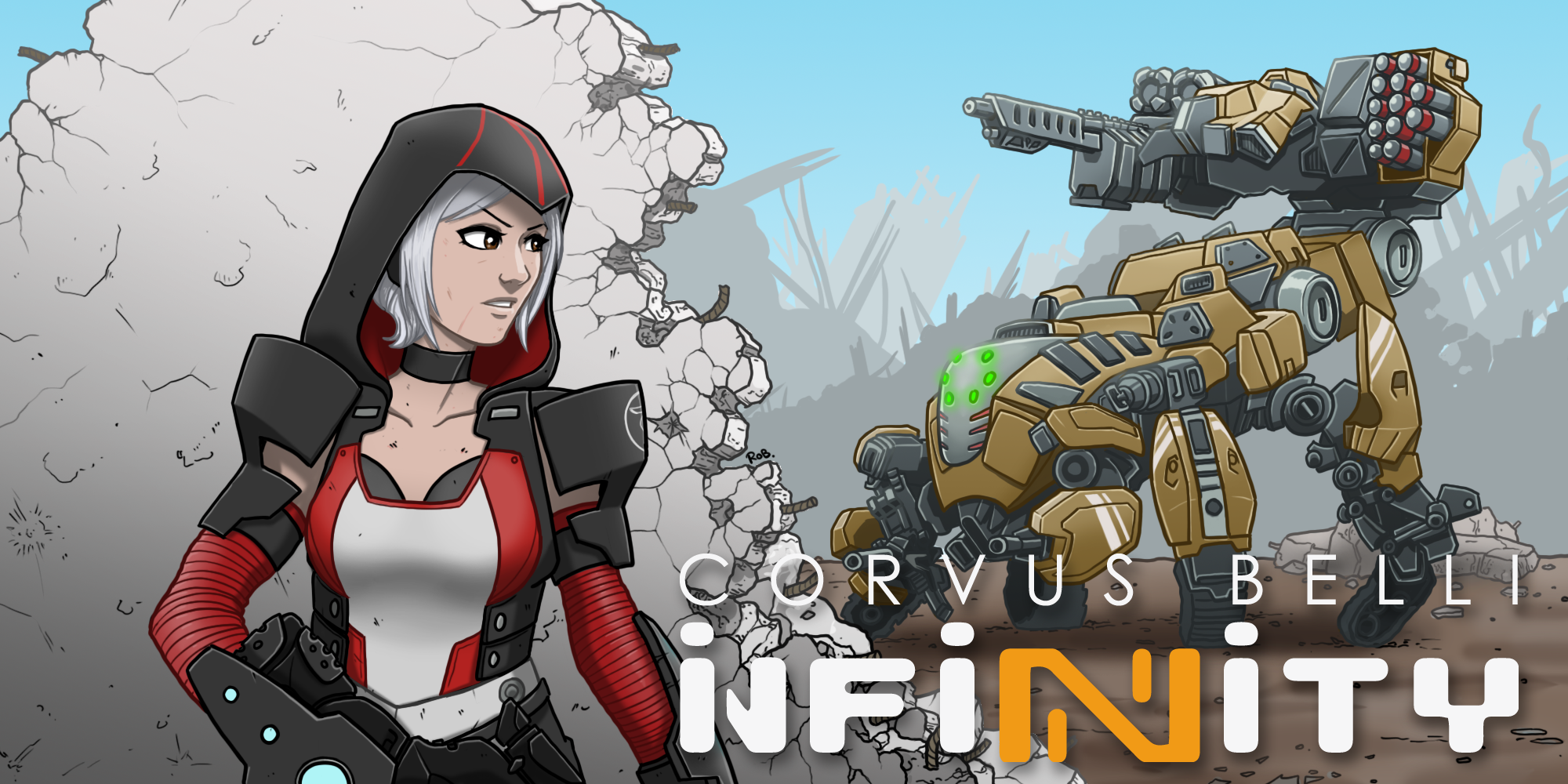Welcome to part 2 of our four-part series on the fundamentals of Infinity. If you missed part I on general strategy, you can find it here.
We’ve previously talked about the Fundamentals of List Building in Lupe’s article on the topic. It’s a great introductory piece for players starting out, so if you’re new to the game, we’d recommend checking out that article first. In today’s article we’re going to dive deeper into the topic, and look at building lists for competitive play.
What to Include in a List?
Envisioning the archetypal competitive game of Infinity described in last week’s article, there are certain roles and purposes which will come up again and again. To this we add mission-specific tasks that you know will form part of your plan for winning the game. Together, these give us certain roles for our models which any good list will have to cover. Before we break those down, there are some general characteristics of competitive lists.
The cap on total number of order-generating models is 15. Almost all competitive lists will hit this target, and many factions which have access to good units with Tactical Awareness, or can take NCO units, especially with +1 Order Lts, will also do so. Orders are the fuel for your game plan and you always want as many as possible. In addition, there are huge benefits to having plenty of pieces on the board: By occupying board positions you are inherently delaying your opponent and restricting their movement options. Even the most humble trooper can delay the enemy for one Order, which may be what keeps them off the Objective in Round 3. You do need to be disciplined with what units you pick to achieve the magic 15, but it’s possible for most every Faction, and doesn’t stop you from taking a TAG or a couple of lesser, but still very potent, attack pieces. In fact, without the 15-model rule it is almost certain the norm would be ~20 model lists, as was common in N3. More models gives you more options, more Orders and more obstacles to your opponent’s Orders.

To achieve this 15 model count, with any extra useable orders possible, it is worth cutting costs back on most units, to concentrate strength in a few models. New players are sometimes put off that a single model can use the entire Order pool, apparently fighting the battle single-handed. But believe me – the perfect list is not 14 mooks and 1 superlative elite unit. Position is everything in Infinity. Your one dominant piece can’t be everywhere at once, and if it’s trapped in a poor position, you need other models with differing capabilities to win the game.
There is a balance, and it varies between Factions, players, tables and most importantly Missions. The constant is that not every model in your list will be a star. Some, or even most, will sit quietly in your Active Turns while a couple attack pieces go for the enemy, and/or Specialists go for the Objective. You generally want the supporting pieces to be cheap and the attacking pieces to be double-hard. This isn’t to say the former don’t have anything to do. They may win the game for you if the board position calls for them to spend Orders. If your only models with any real punch are 2-3 attack pieces, and your opponent removes them, or you’re unlucky and lose them in the Active turn, you can be left toothless. But if you underinvest in the attack pieces, you can find yourself unable to confront the enemy’s best pieces head on, forcing you to spend an unacceptable amount of Orders getting around them.
Unit balance is very good in Infinity compared to most tabletop wargames, but in a competitive environment, certain units do rise to the top as being that bit leaner, meaner, or with some particularly valuable combination of skills and equipment for a role. You can win in Infinity with a variety of units, as long as they all have a role to play in your list and the overall structure is sound. But certain profiles will be seen more commonly on competitive tables. For example, as a Nomads and Corregidor player, I rarely ever build a list without Moran Masai – they simply add too much of a unique capability, with their Repeaters and Crazy Koalas, to leave out. However, if I were playing a mission with an Exclusion Zone, preventing them from deploying in the midfield, it’s possible I would replace them with something else. Even the most famously tuned profiles may be a poor fit for the mission, the other elements of your list and your overall gameplan.
Typically it’s the cheap units that are most ubiquitous. 7pt Flash Pulse Remotes, Kuang Shi, Netrods/Imetrons. Many competitive lists will include multiple troopers under 10pts. Competitive players squeeze their units. Everything has a role in the game plan and you want the cheapest unit for that. For example, to provide an Order, be a limited speedbump in extremis and watch out for threats entering the DZ, a 7pt Flash Pulse Remote is usually more efficient than a 10pt line trooper, while also adding a Repeater which might tie into your Hacking protection or plan to buff other Remotes using an EVO Hacker. On the other hand, the line trooper may be part of a Fire Team or a Lt option, real or a decoy. You have to get the best deal that fits into your plan.
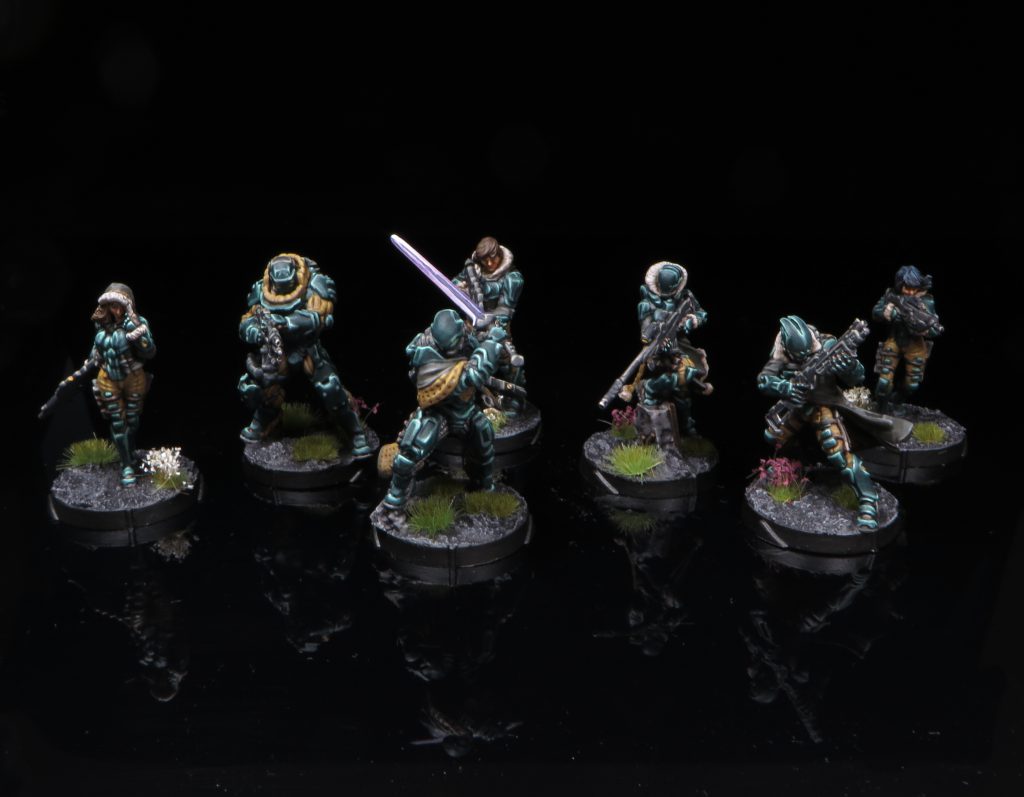
A good list will usually use all its SWC, but the important metric indicated here is whether the list has sufficient long range firepower. Units that can fight at 16-32″, or even further, are necessary on most tables to break out of your DZ and win the initial firefight. Without them you can end up pinned down at range. There are ways to get past that, moving with smoke or behind some cover, but the table may not support that and it will certainly cost you additional Orders. When only one side has long range firepower left, it can dominate, and you will take casualties in the game. So plan for redundancy, don’t just have one long range shooter, even if it’s very strong. Aim to have 3-4. 2 is walking the line, but OK if you have other units that can rapidly close in to their effective ranges. 1, or god help us 0, is a disaster waiting to happen.
We mentioned how some units are stars and others will default to support and providing an Order (but can step up, to varying degrees). Overlapping with this, there is a distinction between Order-hungry and completely Reactive units, with some options falling into the middle. An elite Warband, or a mobile piece with heavy firepower, are both Order-hungry units. Things that want to spend a stack of Orders not just Shooting from near their deployed position, but Moving significant distances and engaging multiple targets one after another. They need to be pushed hard to fulfill their purpose. So what for list building? You can’t get the most out of several such units in the same Combat Group on the same Turn. You usually have resources, even with a full group, for one big attack run and a couple set-up or shaping actions. Maybe in the right situation a 1-2 punch where you activate 2 Order-hungry models consecutively. So don’t include more than 2 or 3 hungry models in a full combat group. And that’s for redundancy, in case 1-2 get killed. If you have more than 4, at most, really aggressive, hungry units in your list, take some out to replace with defensive units that can play their part without having many Orders pumped into them.
A list should also cover key threats. First, you need overlapping threat ranges (i.e. different sorts of weapons), including the ability to ‘trade’ with Direct Templates (we will explore this in a future tactics article). That will give you a solution on the board to most things the enemy will throw at you. Try to have some non-hackable attack pieces, or at least Hackable but with Stealth, or you may get bogged down in Hacking AROs. Have something that can reach into the enemy DZ, either by high mobility, Combat Jump, Parachutist or Impersonation. Have some models which can start outside your own DZ. You may want MSV2 (or 3) to counter Mimetism (-6) units which can be very dominating otherwise, although melee and templates can also solve this. Sensor is a powerful tool if you are frustrated by attacking Camouflage. Chain of Command is great insurance if you find your Lt frequently being killed, although cautious deployment and covering short-range AROs can also solve this. Smoke is a super useful capability and should always feature if it is available to your Faction. Finally and perhaps most vitally, do you have weapons or some other way to take down a TAG? Their high ARM and Str values make them prohibitively slow to take out with normal rifles or even HMGs. You need to have AP or other special ammo types, E/M being the best, similar ammo-type melee abilities, and/or Hacking, otherwise a TAG can brush aside your efforts to take it out.
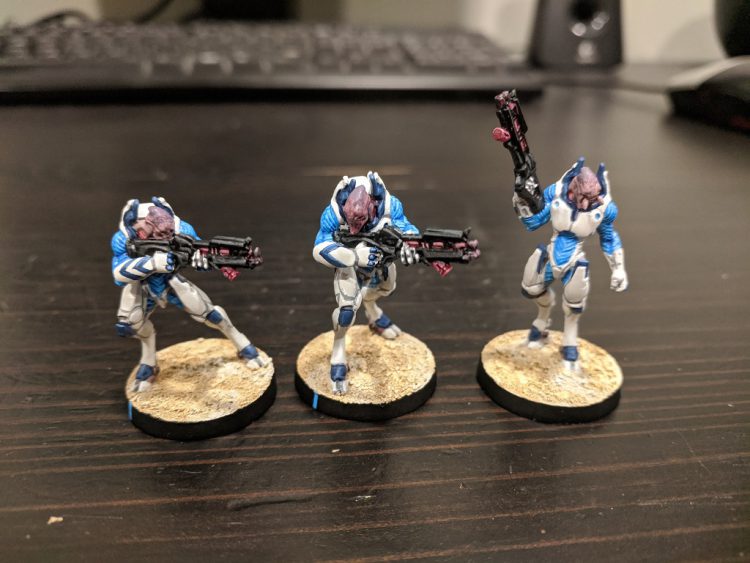
Combat Group Structure
With a goal of 15 models, you will of course be using 2 Combat Groups. In order to extend the reach of your best attack pieces, it is common to put them into a full group of 10 Orders. That lets you, hopefully, deliver a threatening punch in Turn 1. Given the ability of the second player (which is usually taken up) to strip 2 Regular Orders from the first player in Turn 1, having fewer than 10 Orders available severely limits your ability to get amongst the enemy in Turn 1. For this reason, I advise against splitting Combat Groups more evenly, into 7 and 8 models for example. However if you find that plan works for you in the mission, go for it. Similarly, I would always have the recommended 2-3 Active pieces within that main Combat Group. My second group would have models with limited aims, and any Reserves like Combat Jump, which can be swapped into the main group before hitting the table. But that is shaped by my own experience and the Factions I’ve played. Many good players will have their own ideas. The best way is to play repeatedly, and check if you are often feeling short of Orders in one group, or with no great uses for them in the other.
The smaller second group needs to have units which can meaningfully contribute without extensive movement or other set-up Orders. Examples of troops that could prosper in a 4-5 Order group would be midfield troops which could move, placing mines and/or activating Objectives, then re-Camouflaging or entering Suppression Fire. Or a firepower unit which is only intended to target long-range AROs from near its starting position. One innovative example of this I’ve heard was of a competitive player who used their TAG in the second group. The rationale was that it was too dangerous to advance it in a full tilt attack in Round 1. In the second group, it could simply smash any exposed AROs, while other attack pieces would go forward first and remove certain threats such as Hackers. The TAG could then transfer to the main group in a later Round and rampage unconstrained. Always consider which models will swap Combat Groups during the game. This is a very common use of Command Tokens, although there are other very strong uses which present an opportunity cost. But in many lists, more than having its own tasks, the second group exists as a reserve pool of Orders. Both reactive and Active models move into the main group, taking the place of casualties to maintain a fully functioning group with both striking power and the Orders to feed it. That’s fine, but you do want some value out of the smaller group in the first Active Turn, even if that’s just laying some Deployable Weapons, using Supportware or re-positioning for later Rounds.

Unit Categories
The roles below are tasks which you need to consider the tools for. A single model can easily function in several of them. A cheap Warband can be a Point Guard and a Hunter. An Infiltrating unit can be a great Active Specialist and a Hunter, or even provide some Deep Strike capability. Many powerful shooting units make great Sweepers but also have the mobility to act as Hunters or the resilience to act as ARO pieces. A Support Specialist can certainly become an Active Specialist in the late game. The important thing is to have a pre-game idea of why you’ve included models in your list, where will you deploy them, what targets or opportunities are they looking for? Then remain mentally flexible enough to take advantage of the table and opponent and tweak your plan as necessary.
Sweepers
You need long range gunfighters to remove any AROs in Round 1 and to force the enemy to keep their heads down by the mere threat of their presence. Not having anyone capable of this will give you real problems. The so called ‘gunfighting’ skills and equipment are the key qualifications for this role: Mimetism, Marksmanship, Surprise, Multi Spectral Visors (MSV). Any combination of those, with a long range weapon, preferably Burst 4, makes a good sweeper. Alternatively, models with a high BS and the resilience to power through a single unlucky hit – any TAG with an HMG or similar long range weapon fits this role perfectly. Smoke in a list complements MSV2 units in this role – shooting under cover of smoke is a great way to safely single out weaker AROs and to stack modifiers to overcome things like Total Reaction remotes risk-free.
Sweepers can double up into a role as more mobile attack pieces, or they can be used more cautiously, sticking in or around your own DZ and only targeting visible AROs.
Primary ARO Pieces
These are models you can rely on to delay the enemy’s Sweepers, forcing them to engage in FtF rolls early on or to spend Orders avoiding them. Snipers or Missile Launchers in Core Fireteams are the pre-eminent ones, but Total Reaction or Neurocinetic models also fit here. Anything resilient with gunfighting mods, or less commonly the combo of long-range weapons and disposability, will do the job. Don’t expect these pieces to necessarily survive, so having a Doctor/Engineer buddy intended to deploy nearby and revive them is good list-building.
Midfield Obstacles
Part of an effective defence is throwing up some Midfield presence the opponent can’t just move through – Hackers, deployable weapons, particularly Minelayers which can start the game with weapons deployed, boarding shotguns, Jammers. Thanks to Camouflage and Mimetism, many more expensive versions of these units do double duty as potential Active turn threats, well suited to threaten the enemy in their DZ or attack other models in the midfield. Others can also fill the Active Specialist role, or even all three together. Be aware that these models start the game within your opponent’s reach, especially if the table offers no safe deployment spots tucked away. So they can get killed early on – if they’re not purely included as disposable obstacles, be more conservative with their deployment when going second.
I especially value Primary ARO Pieces and Midfield Obstacles in missions where the enemy needs to seize an Objective from you and move away from it, e.g. Capture & Protect, or Supplies. You can’t deploy ‘head down’ in such missions if your opponent is going first, you need a defence around the key points which will make it too Order-intensive for them to get there and have any Orders left to withdraw.
Deep Strikers
Many Infinity armies will have a Lt and no particular insurance against the punishing Loss of Lieutenant state. That alone would often be enough to justify a dedicated assassin. There is also a clear Order efficiency benefit to starting near or in your opponent’s DZ, where you can attack the most vulnerable enemy models. It is one of the only ways to make attacking these soft targets worthwhile. Foot-slogging it over from your own DZ to start engaging them is not Order-efficient enough.
Combat Jump and the specialised Infiltrators with a net +3 to the Phys roll to deploy in the opponent’s table half are both good at this role. Impersonators are the champions of it. Key is to position them, and put in enough Orders, that they justify their inevitable death to ARO or counter-attacks. Smoke and melee abilities are very good here as they get round conventional shooting AROs, including the Direct Templates which stop many attacks into the DZ. Deep striking models are essential in certain missions with an ‘assassination’ type Objective, e.g. kill enemy Lts. If you don’t have a tool to get right into the enemy back line, they can deny you that Objective simply with a cautious enough deployment.
Active Specialists
In many missions the most important thing is to activate central Objective(s). You need troops with a Specialist ability (or Spec Operative) to do this and it directly saves you Orders if they can deploy in the central area at the start. Alternatively you could use a very fast moving model which actively wants to move up into the midfield in order to fight. Bonus if the Specialist can also fight well, as it may be more Order-efficient than using another model to clear enemies, before moving the Specialist up. Hidden Deployment is the top skill for this as you can stay safe until it’s time to reveal. It doesn’t particularly matter what kind of Specialist they are – usually Hackers are the most useful type to have in the midfield due to their ARO games, but bear in mind this also makes them vulnerable to Hacking Attacks. Forward Observers are frequently the cheapest Specialist profiles available on skirmisher-type troops with Infiltration and Camouflage.
Some missions will have a bonus for a thematic type. E.G. in Supplies, Doctors and Paramedics can roll 2 dice with a +3 Mod. That is absolutely clutch and drastically cuts the dreaded, game-costing risk of simply failing a WIP roll for an Objective several times running. It doesn’t outstrip other concerns about how the Specialist gets to the Objective and what else it can do to the enemy, but it really helps.
The main take-away for this is that a Specialist who can start next to the Objective, and has some form of Camouflage, or can be Hidden, or can Combat Jump in Round 3, is exponentially more useful than a Specialist in your DZ. If you are using the latter, they need some sort of special mobility and combat power to fight their way forward if necessary. In missions which use Specialists activating Objectives as the primary Objective, including the right Active Specialists is the most important part of your list.
Support Specialists
They aren’t just useful for completing Objectives, in fact you can include Specialists purely for their role, with the ability to run forward and activate Objectives non-applicable to the mission or all your Active Specialists are just dead! This covers EVO Hacking Remotes, long range firepower troops which happen to have Specialist Operative or Chain of Command, but generally these are Doctors and Engineers. Those models are great insurance for your key fighting pieces, especially when you know they will already begin the fight from their deployment positions (Sweepers and ARO pieces). If your Faction has fairly cheap Doctors, the cost over a Flash Pulse Remote is worth it for a chance to revive a vital 40pt firepower model with just 1-2 Orders. This goes even more for Engineers and models with Remote Presence, whose powerful 2 levels of Unconscious makes them far more likely to stick around to be repaired.
The usefulness of Doctors and Engineers declines sharply as support for more mobile units. Infinity games are just too short to spend a chunk of a Turn getting across the table to roll (and possibly fail) to revive a model, unless it is in direct support of taking an Objective. If taking a Doctor or Engineer, have a clear initial purpose – what model will they deploy nearby, ready to revive if it goes down? Anything beyond that is gravy. Their range can be further extended by giving them Servant bots (highly recommended) or including them in a Fireteam where they will be dragged along with some more fighty models, ready to step forward and heal them if needed. I especially favour doctors (or Paramedics) and Engineers in missions where the goal is to kill more points than the enemy or to have points in various zones. Reviving a key model can be an important swing in such missions.
Hunters
You will need some models to clear the midfield of enemies and possibly even fight through to the enemy DZ. This overlaps heavily with the Deep Strike role above. Gunfighting skills, Sensor and mobility skills like Climbing Plus are all great here, to enable the model to get to and remove enemies tucked into rooms, hiding on roofs etc. Great to be a Specialist as it lets the model also accomplish Objectives – but probably best to not be a Hacker unless you’re good enough to smash any opposing Hackers. An alternative fill to this role is simply sending in disposable Warbands. Especially if Impetuous, they can efficiently go in there and win – you don’t need fancy kit to hunt down 1W models when you’ve got Template Weapons and melee skills! The more elite Hunters, resilient and mobile attack pieces, are natural Datatrackers when the mission includes them.
Point Guards
Long-range ARO pieces are expensive, limited by SWC and worth supporting. Short range AROs, particularly Direct Templates, are cheap as chips and equally necessary for defence. You want some expendable models who will threaten to template any attack pieces that enter your DZ. Ideally, while they’re doing that your more valuable support units can Dodge to safety. A network of Chain Rifles and shotguns in your DZ is the best possible deterrent to Combat Jumpers, Infiltrators and any other 1W model that wants to penetrate your DZ.
Order Monkeys
Some factions can use Warbands as their cheapest Orders, mostly in the Point Guard role described above. If you don’t have those, there are still uses for the bog standard rifle carrying line trooper. You may be taking a few anyway as hidden Lt options or even specifically as decoy Lts. If you have troops standing round the back in your DZ, it’s generally best to deploy them covering rear arcs and areas where a sneaky attacker can threaten your Fire Team, your support specialists or any other juicy soft targets. Outside of those uses, the very cheapest models in the game, unarmed Remotes, are often taken at max AVA for this role.
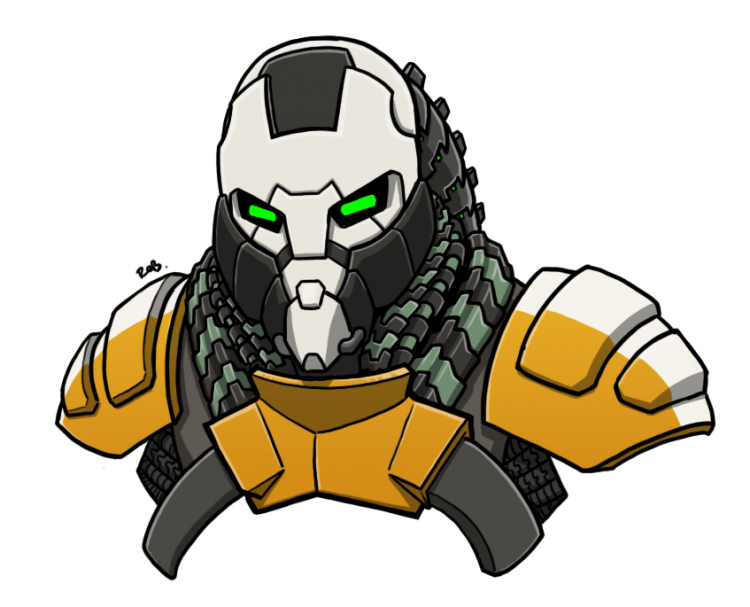
Building Fire Teams
If you’re playing a Sectorial and not getting some use from Fireteams, consider playing the vanilla Faction instead. If you are sticking with a Sectorial, what Fireteam(s) to include in your list will probably be one of the first decisions you make when writing it. The most commonly included Fireteam, and the easiest to reconcile with the other principles of List-Building in Infinity, is a defensive Core Fireteam. Take 4 cheap line infantry models, add one powerful Primary ARO Piece (or Sweeper, or a dual role model which does both). Optional extras include making some of the cheap models into support specialists (often something which can revive the firepower piece) and hiding your Lt within the team. This basically takes models you were going to have anyway, relatively cheap Orders, and makes them much more difficult to attack. There are downsides in that it makes your deployment rather predictable; certain tactical options, like Speculative grenade launchers and Guided Missiles, excel against Fireteams and it generally means clustering models together where the right model can more efficiently cut them up. But it’s free bonuses which simply make the Fireteam members slower and more risky to take out.
Fireteams can of course be built into much more aggressive threats. For some Missions there are great advantages to the efficiency of moving multiple models together. It may let you easily move a mass of points into a specific zone, or you can move multiple fighting models to defend an Objective at the same time as a Specialist moves to activate it. The downsides are how much more predictable and restricted a Fireteam makes your board position. If you move a Fireteam forward to attack, you are always going to have multiple models clustered together as they come inside the opponent’s reach. This is the opposite of how you usually want to keep your models alive! Always consider a 2-3 model Fireteam for offensive maneuvers over dragging a full 5-model Core team around the table. For any sort of Fireteam, keep it lean. It’s very easy to be misled during list-building by considering your 5-model ‘Pain Train’ of absolute badasses, including 3 great shooters with overlapping weapon ranges, a wicked Hacker and a superb melee combatant, and thinking they must be an unstoppable force. But that sort of thing can be half your points, and it’s only in one place on the board.
A final note about list building and Fireteams. Your Sectorial may have multiple flexible options such as Wildcards. If you have, as I commonly do when making Corregidor lists, a Core and Haris Fireteam in mind, don’t feel committed to those choices until you are actually deploying. You may be able to switch up your combination of troops to better suit the table. In general, in most armies, you will have built your list with specific teams in mind. Just be aware that you are allowed to switch it up, and make a mental note before the game of what other combinations are open to you with the profiles you’ve included.
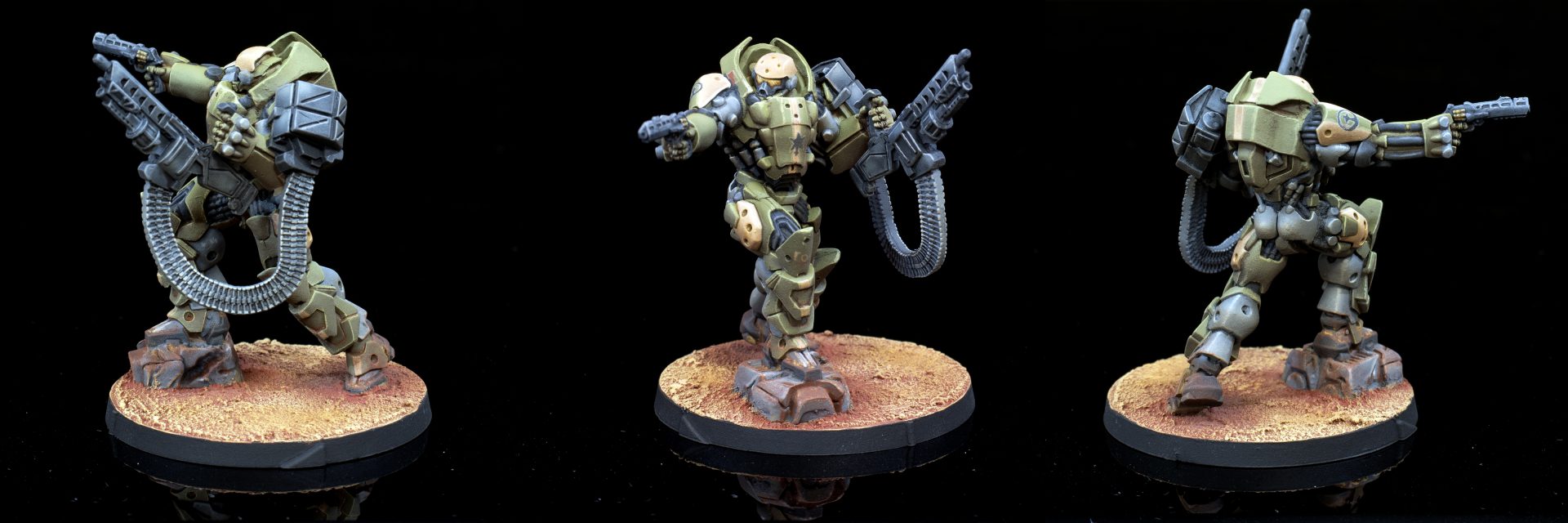
Mission Analysis
Remember in our previous article, when we said “the mission is everything?” All the above rules and unit types are just shaping concerns – background. They are common to most games of Infinity and form a background awareness for competitive players. What needs to be at the forefront of your decisions when list-building is the Mission. Once you’ve internalised that sense of what’s a good list, spotting weaknesses and visualising what patterns you’d deploy in, you tend to start crafting lists to the specific Missions, then mentally checking whether they are sound overall lists.
Note that the standard system for ITS events is to bring 2 lists of the same Faction or Sectorial. These are typically for a total of 3-5 missions. My first step is always to read through each mission and list, for all of them, what particular types of tool I think I need. Let’s suppose I am attending a 3-round event with the following missions
Supplies: I know I need at least 3 Active Specialists, to give me the chance of seizing all the boxes. It would be great if some could be Doctors/Paramedics, to minimise the chance of wasting Orders failing the WIP rolls. I need Midfield Obstacles, and less vitally other ARO pieces, to delay or stop my opponent from stealing the Objectives. Some Deep Striking capability can be vital to recover any Objectives the enemy does bring back to his DZ, as will Hunters to remove the opposing Active Specialists before they can move in.
Frontline: First of all, I want a lot of troops with Infiltration or similar skills to deploy already in the key zones. I want powerful single models, or a decent Fireteam, which are suited to moving forward from my own DZ, letting me secure the zones while still degrading the enemy. I need some Doctors/Engineers, which could provide the vital swing in my favour by reviving Unconscious models in the endgame. Finally some Deep Strike (Combat Jump or Parachutist) models can bring themselves right into the zones I need at the end of the game – Hidden Deployment could be used in a similar way. Frontline does not require Active Specialists – there is one Classified Objective, so I can plan to simply Secure the HVT. (see notes on Classified Objectives below)
The Armoury: I need close-quarters Hunters who can sweep and clear the room; ideally some should be high-points and resilient as well as cheap, disposable options, since I need to be able to hold the room if going first. I need Active Specialists to gain access to the room, or I can take Anti-Materiel close combat weapons to get in. Midfield Obstacles are something you have to spend Orders putting in place, due to the Exclusion Zone. The Armoury is a fairly unusual mission – the ability to take (especially when going second) and hold (especially when going first) is literally the only Objective. But other board-control concerns like Sweepers and and Primary ARO Pieces can still be important to deny your opponent the approaches to the central room, depending on board layout.
Having analysed my needs for the individual missions, I try and group them by shared requirements. The goal is to decide on making, for example, a List A which will cover Missions 1-2, and a List B which covers Mission 3. For the missions above, there’s not an immediately obvious pairing of 2 similar missions and 1 differing. Supplies and the Armoury could both use Active Specialists, but Supplies needs more and heavily values their having Infiltration, while Armoury has an Exclusion Zone which makes anything more the Forward Deployment (+4”) wasted. Frontline needs no Specialists at all, Armoury can also be played this way by gaining entry to the room via Anti-Material melee. However Frontline also heavily values Infiltration and Midfield Obstacles, like Supplies. Frontline and Supplies both share a need to strike into the enemy table half. If playing a Sectorial, both Frontline and Armoury could use a high-points, aggressive Fireteam to go forward and dominate scoring zones.
In the end, I decide to write List A for Supplies and Frontline. I will include a high number of Infiltrating models and a Combat Jump reserve. The Active Specialists I think I’d take for Supplies, as a Nomads player, will be far from dead weight in Frontline. That leaves me free to write a List B dedicated to Armoury. Such a unique mission will benefit from heavy tailoring.
The process there is how I personally approach list-building for events. But within those requirements I still fall back on profiles and synergies I consider best-in-faction and which I am comfortable using from many games’ experience. For example, playing Nomads or Corregidor, I know that my Supplies/Frontline list will include 2x Moran Masai. Despite the Exclusion Zone, there’s a strong case to include them in Armoury as well. In Armoury, I will highly likely take McMurrough, and/or a Haris team based around Senor Massacre. The general structure of the lists I’ve been using in N4 – Core and potential Haris teams in Group 1, with a more supporting Group 2 which includes my Combat Jump/Parachutist reserve, will likely continue in both lists.
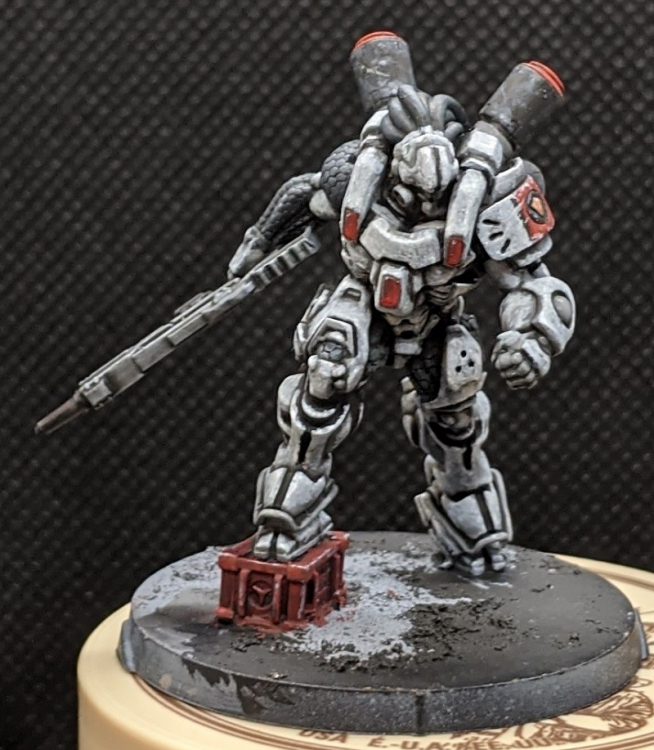
Alternate Systems of List Building & Other Factors
The most common example would be tailoring toward certain enemy forces, due to the missions or your local meta. Examples might be including plenty of Sensor or MSV1 because you consider massed Camouflage units your main threat, or taking multiple Hackers and AP weapons because you’re likely to face TAGs. Some players might write two lists which they’d consider using for any mission – one with a TAG and one without, or one very aggressive and close-quarters for dense tables, one stressing long-range firepower for open tables. Whatever works for the individual, if you prefer this sort of split to the mission analysis presented above, go for it.
Just make sure your list does actually have the tools to achieve the Objectives. If you show up to a Supplies mission, for example, and actually have no Specialists, you are completely in your opponent’s hands! On a less basic level, in Supplies as in many other missions, having no Specialists which can deploy forward near the Objectives is going to cost you a few crucial Orders at best. At worst, it will leave you pinned down away from the Objectives, when a relatively minor list tweak, tailored to the mission, would have opened up great options to snatch a win even from a losing position.
A Note on Classified Objectives
Pay attention during your mission analysis to the Classified Objectives, if they exist. Does the mission use HVTs or Designated Targets? If there are 3 Classifieds, you may want to include some variety of Specialists and other models that can achieve different Classifieds. In all missions where there is only 1 Classified Objective, you can simply plan to Secure the HVT. It’s generally more Order-efficient and risk-free, especially if you’ve won the game in terms of attrition, when it can often be done with a couple movement Orders. Some Classified cards are an enormous pain to achieve, some are quick and easy or may mesh with what you want to do anyway. Don’t feel you need to build your list to cover all the potential Classified options, unless playing a mission which revolves around them, E.G. Highly Classified. If you can lock in a Classified Objective en route to your main goal, for one or two Orders, by all means go for it. If it may take half a Turn of rolling coin-flip FtF rolls, consider whether it is really worth it – usually focussing on the primary Objective will be best.
Bringing Your List to the Game
Once you’ve exhausted all this energy thinking about Infinity games, your list and the mission, you will have to put it into practice. By all means go over in advance how you think the game will run, but the key time is when you have seen the table and determined Deployment and Turn Order. That is when you run through your plan for all three Rounds of the game. It won’t actually go that way, no plan survives contact, but if you don’t even have an idea, you aren’t going to do well! You will have to improvise during the game; Infinity is all about board position, and your opponent will be trying to put their own plan into action. But pre-deployment you want to know that there is a route to achieving the Objective. Keep that route in mind, focus on it and remind yourself of it throughout the game.
Next Time: Tactics and Decision-making
That wraps up our look at building lists. In our next article we’ll start to dive into the tactical side of things, and look at how you can evaluate the board state and make better decisions during your games. In the meantime, if you have any questions or feedback, drop us a note in the comments below or email us at contact@goonhammer.com.

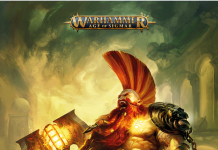
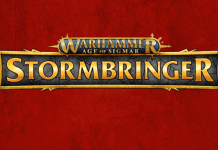
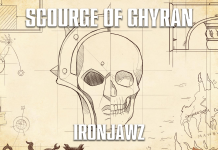
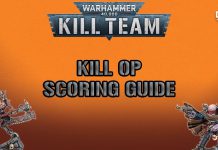

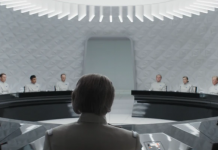
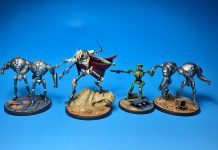
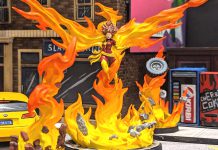
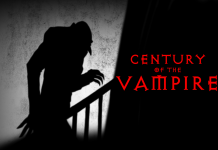
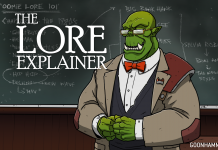
![[40k] Competitive Innovations in 10th: Warping Time pt.2](https://d1w82usnq70pt2.cloudfront.net/wp-content/uploads/2020/01/Analysis_Banner.png)


